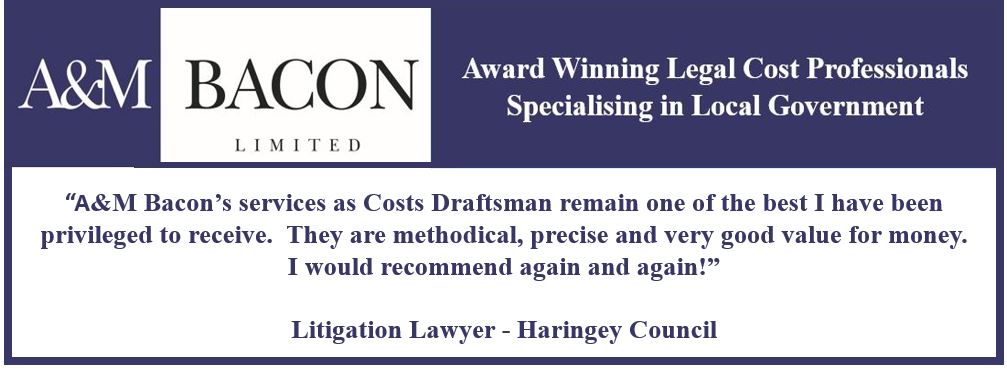Enforcement and certificates of lawfulness
 Phillip Hopkins examines some conundrums created by the Town and Country Planning Act 1990 in relation to planning applications, enforcement notices and certificates of lawfulness of existing use or development.
Phillip Hopkins examines some conundrums created by the Town and Country Planning Act 1990 in relation to planning applications, enforcement notices and certificates of lawfulness of existing use or development.
This note explores the wording and intentions of:
- Part A: s70C of the Town and Country Planning Act 1990 (“TCPA”) with regards to the consideration by Local Planning Authorities (“LPA”) of planning applications following issue of an enforcement notice (“EN”); and
- Part B: s191 (2) / s175 (4) TCPA with regards to the consideration by LPA’s of certificates of lawfulness of existing use or development following service of an EN which is then subsequently appealed.
Part A
The Localism Act 2011 amended the TCPA 1990 by inserting s70C which reads:
70C Power to decline to determine retrospective application
(1) A local planning authority in England may decline to determine an application for planning permission for the development of any land if granting planning permission for the development would involve granting, whether in relation to the whole or any part of the land to which a pre-existing enforcement notice relates, planning permission in respect of the whole or any part of the matters specified in the enforcement notice as constituting a breach of planning control.
(2) For the purposes of the operation of this section in relation to any particular application for planning permission, a “pre-existing enforcement notice” is an enforcement notice issued before the application was received by the local planning authority.
This section is clearly drafted and states that a LPA can refuse to determine an application for planning permission if granting such planning permission would involve granting planning permission of the matters specified within an EN. Subsection 2 is helpful in clarifying that the enforcement notice referred to in subsection 1 is a “pre-existing enforcement notice” being one issued BEFORE the application for planning permission was received by the LPA.
This position has been clearly confirmed in the recent High Court decision H.C. Moss (Builders) Limited v South Cambridgeshire District Council (2016) in which Dove J applied the case of Wingrove v Stratford-upon-Avon District Council [2015] EWHC 287 (Admin.) and held that s70C equipped LPA’s with a "broad discretion" to refuse to determine planning applications which seek permission for the whole or any part of land to which an existing enforcement notice relates specifically to the development proposed.
I have read commentary which raises the issue of a “conundrum” in respect of enforcement notices which have been appealed (and whether these fall within the scope of being a “pre-existing enforcement notice” pursuant to S70C (2) TCPA) but this conundrum (which I will come to in Part B of this article) is not an issue here because the language used in subsection 2 is explicit and does not include limitations on whether the enforcement notice must actually be in force or not – all that is required for the provisions of s70C to kick in is the issuing of an EN on the land and a subsequent planning application which seeks permission for development covered by the pre-existing EN (regardless of whether that EN has been appealed or not). If it was Parliaments intention to only include active (non-appealed) EN’s then subsection 2 would have clearly have provided for this.
Part B
The conundrum I refer to above in Part A of this article appears to come into play in S191 TCPA which relates to certificates of lawfulness of existing use or development (”CLEUD”). The provisions of concern relate to subsections 1 and 2 and read:
191 Certificate of lawfulness of existing use or development
(1) If any person wishes to ascertain whether—
(a) any existing use of buildings or other land is lawful;
(b) any operations which have been carried out in, on, over or under land are lawful; or
(c) any other matter constituting a failure to comply with any condition or limitation subject to which planning permission has been granted is lawful,
he may make an application for the purpose to the local planning authority specifying the land and describing the use, operations or other matter.
(2) For the purposes of this Act uses and operations are lawful at any time if—
(a) no enforcement action may then be taken in respect of them (whether because they did not involve development or require planning permission or because the time for enforcement action has expired or for any other reason); and
(b) they do not constitute a contravention of any of the requirements of any enforcement notice then in force.
This section allows an applicant to submit a CLEUD application to a LPA for consideration to determine whether existing uses / operations are lawful. Subsection 2 goes on to say that uses and operations are lawful at any time if time for enforcement has expired (the 4 or 10 year rule) or they do not contravene the requirements of an enforcement notice “then in force”.
S175 (4) TCPA clarifies the meaning of “then in force” as follows:
(4) Where an appeal is bought under section 174 [the section that deals with appeals against enforcement notices] the enforcement notice shall…be of no effect pending the final determination or withdrawal of the appeal
When read with S191 TCPA, this means that two possible scenarios can occur:
Scenario 1
An applicant can submit a CLEUD application for determination to a LPA, and if the applicant has not met the 4 year or 10 year rule for immunity (for instance) the LPA can serve an EN on the applicant. The applicant may then submit a second CLEUD application to the LPA BUT in that situation the operations would not be lawful (pursuant to S191 (2) TCPA) because the operations would constitute a contravention of the requirements of the enforcement notice then in force. This would make perfect sense because it would not be logical for the LPA to determine a CLEUD application for development for which it has served an EN against and so we have a situation similar to that provided for by S70C (as discussed in Part A of this article).
Scenario 2
To get around the scenario above, the applicant can exercise their right to appeal against the EN. If he or she does so, this means that according to S175 (4) TCPA the EN is not “then in force” pending the final determination or withdrawal of the appeal. This means that the LPA would then be obliged to determine the second CLEUD application. If no further evidence is submitted by the applicant with the second CLEUD application then the LPA is within its rights to refuse it again and the determination / withdrawal of the appeal would run its natural course. The conundrum however occurs where the use or operation subject to the CLEUD application then reaches the 4 or 10 year period of immunity whilst the appeal to the enforcement notice is still pending final determination (which can be a time consuming process as we know). Does this now mean that the LPA has to determine the CLEUD application in favor of the applicant?
The inclusion of the wording “then in force” as found in S191 (2) seems to create a potential loophole as highlighted in scenario 2 above which creates an illogical situation whereby an enforcement notice is issued by the LPA for a breach of planning control only for the LPA’s hands to then be tied and permission forcefully granted by the determination of a second CLEUD application pending determination of an appeal to the enforcement notice.
This is a potential trap for LPA’s, and must be considered where determination of a CLEUD application demonstrates a breach of planning control which is nearing either the 4 or 10 year immunity rule. Unless the legislation is revised here, applicants are free to gain the extra time they need to make their development lawful, by tactically appealing against an EN served on the back of their CLEUD application.
Phillip Hopkins is a solicitor specialising in planning and environment law at nplaw. He can be contacted on 01603 222965 or This email address is being protected from spambots. You need JavaScript enabled to view it..




